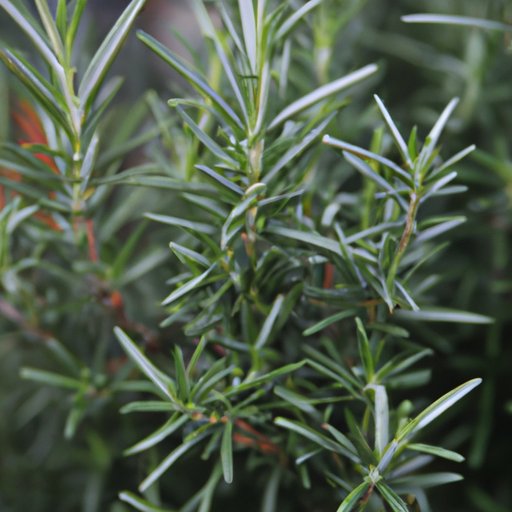
Introduction
Fresh herbs like rosemary are essential for adding flavor and aroma to dishes, and for their many health benefits. Buying fresh herbs can get expensive, but luckily, growing and harvesting them at home is a breeze. In this article, we will explore the benefits of harvesting and using fresh rosemary, and provide tips and techniques for getting the most out of this versatile herb.
The Ultimate Guide to Harvesting Rosemary: Tips and Techniques for Every Gardener
Timing is everything when it comes to harvesting rosemary. For optimal flavor, it’s best to wait until the plant is at least a year old. The best time to harvest rosemary is in the morning, after the dew has dried but before the heat of the day sets in. You should only harvest the top third of the plant, avoiding the woody base. When harvesting, use sharp scissors to cut the sprigs or individual leaves at the base of the stem.
A Step-by-Step Tutorial on How to Harvest and Preserve Rosemary for Flavorful Dishes
Once harvested, there are several ways to preserve your rosemary for use in future recipes. Air-drying is the easiest and most common method. Simply bundle the sprigs together and hang them upside for a few weeks in a warm, dry, well-ventilated area. An alternative method is to use a dehydrator or freeze the herb for long-term storage. Once dry, store the rosemary in an airtight container for later use.
The Benefits and Importance of Properly Harvesting Rosemary for Cooking and Aromatherapy
Rosemary is an excellent source of vitamins and minerals, including iron, calcium, and vitamin C. Beyond its nutritional value, rosemary can also be used for aromatherapy purposes. Inhaling the aroma of fresh rosemary has been shown to improve memory and concentration and reduce stress levels. Properly harvesting the herb allows it to retain its essential oils to maximize these benefits.
Get the Most Out of Your Rosemary Harvest: Expert Tips and Tricks
To encourage regrowth and prevent damage to the plant, it’s important not to cut too much rosemary at once. Avoid removing more than one-third of the plant at a time, and never take more than what you need for immediate use. You can also help keep your rosemary plant healthy by pruning any dead or damaged growth and ensuring it gets adequate sunlight and water.
From Garden to Kitchen: Harvesting Rosemary and Infusing Its Flavor in Recipes
Rosemary is versatile in the kitchen and can be used in a variety of dishes. Add it to marinades for meat and seafood, roast it with vegetables, or use it to flavor bread and other baked goods. For best results, chop the leaves before using and add them to your recipe at the beginning of the cooking process to allow the flavor to infuse throughout.
Harvesting Rosemary: Dos and Don’ts for Maintaining a Healthy and Vibrant Herb Garden
To maintain a healthy rosemary garden, make sure the plant has adequate drainage and plenty of sunlight. Water only when the soil is dry to the touch, as overwatering can harm the plant. When harvesting, be sure to use clean, sharp scissors to avoid causing damage to the plant. With proper care, rosemary can thrive for years.
Using Fresh Rosemary in Your Cooking: How to Harvest and Store the Herb for Maximum Flavor and Aroma
Harvesting and using fresh rosemary is an easy and cost-effective way to add flavor and aroma to your cooking and aromatherapy routines. By properly harvesting and preserving the herb, you can enjoy its many benefits for years to come. Whether you’re a seasoned gardener or just starting out, growing rosemary is a fun and rewarding hobby that can improve both your cooking and overall well-being.
Conclusion
Harvesting and using fresh rosemary is a simple and rewarding way to add flavor and aroma to your cooking and improve your mental and physical health. With these tips and techniques, you can ensure that your rosemary plant stays healthy and vibrant, and that you get the most out of its many benefits.




